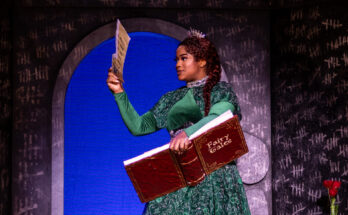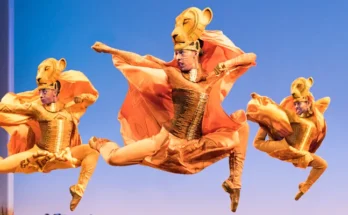“God Bless America.”
“Easter Parade.”
“White Christmas.”
And my personal favorite, “Oh, How I Hate to Get Up in the Morning.”
It’s pretty safe to say that Irving Berlin, the tunesmith behind White Christmas, is America’s songwriter. He’s got a melody for every occasion and then some. It’s a funny turn of fate, perhaps, or a prototypical American story: This most American of composers was a Jewish immigrant, born Israel Baline, who came of age in the tenements of New York’s Lower East Side and broke into show business as a singing waiter while still a teenager.
As composer and colleague Jerome Kern once said, “Irving Berlin has no place in American music. He is American music.” Heady stuff for a guy who had only two years of formal schooling and never learned to read or write music.
Irving Berlin (1888-1989) wrote a century’s worth of music — more than 900 songs, 19 musicals and 18 movie scores. One of those movies, 1942’s Holiday Inn introduced the song “White Christmas.” Twelve years later that movie was reshaped around its most popular melody and released as White Christmas, starring Bing Crosby, Danny Kaye, Rosemary Clooney and Vera-Ellen. In some American households, it isn’t Christmas until White Christmas has been screened.
The tune itself was written as a lament when Berlin was stuck in hot and sunny Los Angeles during the holiday season and longed for the brisk, white days of an East Coast Christmas.
In 2004, 50 years after it hit movie theaters and 15 years after Berlin died at age 101, White Christmas became a stage musical. It premiered in San Francisco, has played extended runs all over the country and even has a British company that’s in its fifth season, according to choreographer Randy Skinner, who’s been with the project since its beginning and earned Tony Award and Drama Desk nominations for his work.
The show played Broadway the past two holiday seasons but won’t powder the Great White Way this year as producers reshape it for quick stops on the road. After previewing in Chattanooga and debuting in Atlanta, it will be seen only in Greenville, S.C.; Hartford, Conn.; Schenectady, N.Y., Tampa; Charlotte; and Chicago – an itinerary likely to include some snow.
The stage musical is mostly faithful to the movie. It’s still the tale of a couple of Army buddies turned song-and-dance men who meet up with a sister act to make sparks fly. There are two major differences onstage, however: The score has been plumped with the addition of many Berlin standards, and it has been infused with dance.
Gone are “Choreography,” “Mandy” and “Gee, It’s Good to Be Back in the Army.” All were cut thoughtfully and for specific reasons, Skinner says. “Mandy” because of its dated and possibly offensive references to minstrel shows and “Army” out of sensitivity to those serving in the Iraq and Afghanistan wars.
What audiences get instead are “Let Yourself Go,” “Blue Skies,” “I Love a Piano,” “How Deep Is the Ocean” and “I’ve Got My Love to Keep Me Warm” along with the iconic “Sisters,” “Snow” and “Count Your Blessings Instead of Sheep.”
Berlin, who wrote four movies for Fred Astaire and Ginger Rogers, clearly understood dancing, Skinner says. He was among the first composers to play with syncopation, and many of his songs have “dance” in the title or deal with some form of dancing in the lyrics, not the least of which is “The Best Things Happen While You’re Dancing” in White Christmas.
So Skinner, who began his choreography career assisting the great Gower Champion on the original 42nd Street, gives us big tap production numbers, ballroom jazz, vaudeville, Fred-and-Ginger-type partner dances and a curtain call surprise.
“I really racked my brain to leave the audience with something [that] hasn’t been seen before,” he says. “How do you build the evening, pace the show so the numbers fall at the right place?”
He knows it’s tough to tinker with such an iconic movie but thinks the stage show, with its orchestrations, costumes and dances, successfully transports theatergoers back to that Vermont inn in 1954.
“It’s tricky. It’s a very tricky thing to do,” says Skinner, who in his dancing days performed alongside the likes of Ann Miller, Cyd Charisse and Mickey Rooney. “I think it delivers in the way the movie does but with even more numbers. I do think audiences walk away feeling that they’ve seen the movie onstage.”
Kathy Janich is an Atlanta theater artist and freelance writer. After years in daily newspapers, she’s found a joyous second career as an artistic associate at Atlanta’s Synchronicity Theatre, synchrotheatre.com.



